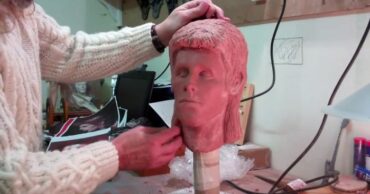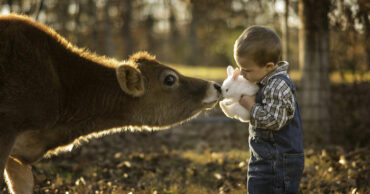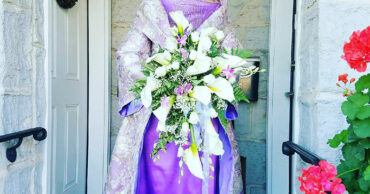The late 90s and early 2000s were the golden era of Cartoon Network, with wildly successful shows like Ben 10, The Powerpuff Girls, and Teen Titans airing at the time. But among these shows, there was one that stood out for being different and daring: Courage the Cowardly Dog. The show centered around Courage, a fearful pink pup with a name that felt like a cruel joke. Courage lived with his owners, Muriel and Eustace, in a farmhouse in Nowhere, Kansas. Each episode followed a villain-of-the-week format, where Courage had to face off against scary monsters, aliens, and other paranormal phenomena that threatened his home and family.
The show ran on Cartoon Network from 1999 to 2002 and has since gone on to receive massive critical success, including an Academy Award nomination for Best Animated Short Film for the pilot episode, “The Chicken from Outer Space.” Over the years, the show has become a major part of pop culture and a cult classic that’s widely regarded as being way ahead of its time when it first aired. So, read on as we discuss what made Courage the Cowardly Dog so special and different from the rest of the cartoons airing at the time.
1. ‘Courage The Cowardly Dog’ Brought Nightmarish Aesthetics Into the Mainstream
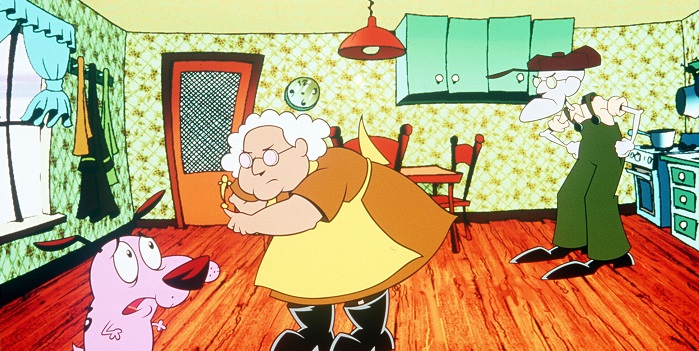
What instantly made Courage the Cowardly Dog stand out from the rest of the cartoons was its eerie, almost nightmarish aesthetic. First off, the Eustace family was completely isolated on a farmhouse in the middle of literally nowhere, cut off from any civilization. This created a feeling of utter dread when Courage saw a weird shadow over the horizon or heard a strange whisper in the distance because we knew no one was supposed to be out there.
What made it worse was the fact that Courage would usually catch on to the problem before anybody else, and his family wouldn’t believe him. Unlike other kid-friendly shows that focused on teamwork and unity, Courage was completely alone, and there was no one he could go to for help (except his trusty Computer, of course). This lack of a safety net made it all the more impactful. We weren’t just watching Courage face monsters; we were experiencing his paranoia, his lonely, claustrophobic world, and his desperate hope for a sunrise after a terrifying night.
The visual design was also on point. The sky was always an apocalyptic red. The desert was always a morbid grey. And the show often combined traditional 2D animation with 3D graphics, VFX, stop-motion, puppetry, and sometimes even live-action elements. For example, in the episode “King Ramses’ Curse”, the character of King Ramses was rendered in 3D, which felt otherworldly with the 2D animation of the rest of the show. And then in the episode “Courage in the Big Stinkin’ City”, the show used live-action footage of New York City, which contrasted with the rural setting of nowhere. These uncanny valley elements helped create a dream-like aesthetic, which made the entire show feel all the more terrifying!
2. The Computer in ‘Courage’ Was Very Similar to The AI We Use Today
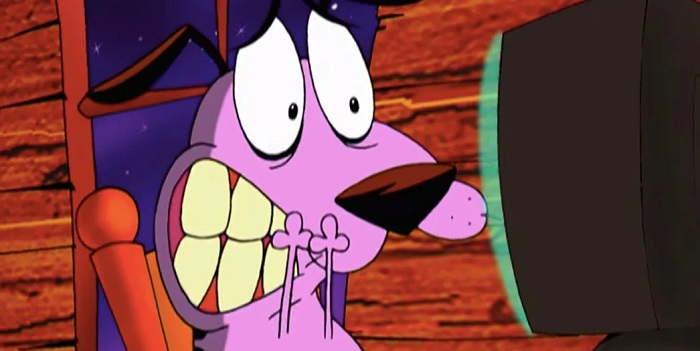
Even though Courage’s Computer had the bulky, boxed look of the old IBM PC, the software that was running on it was way ahead of its time. The Computer was an artificial intelligence system that could perform various tasks for Courage, similar to how we use AI tools and virtual assistants today. It could access and process entire encyclopedias in seconds and present the required bits of information simply and concisely.
It could also control the house doors and windows, just like the smart home technology we have today. The Computer even had a funny bone and always made fun of Courage. Back then, this must have seemed like a futuristic fantasy, but today, we have many AI tools like GrokAI or ChatGPT that are almost similar.
3. ‘Courage’ Warned Us About The Dangers of Global Warming
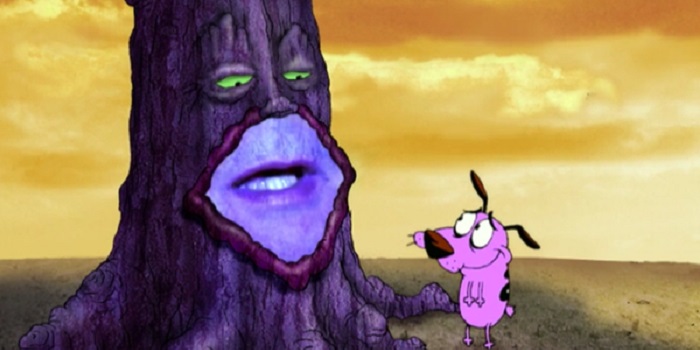
With its giant floating face and blackened eyes, the Spirit of the Harvest Moon was definitely one of the scariest monstrosities to ever appear on the show. In “The House of Discontent”, the Spirit asks Courage and his human owners to grow a plant within ten minutes, or there will be consequences. When they do not take the Spirit seriously, the temperature rises to extreme heat, and everything begins to melt.
And today, we’re seeing this all play out in real life. We didn’t take global warming seriously, and we’re facing the consequences. Ice caps are melting. Heatwaves are becoming more frequent and intense. And the global temperature is rising each year; 2023 was the hottest year ever recorded!
4. ‘Courage’ Paved the Way for Mature Storytelling in Animated Shows
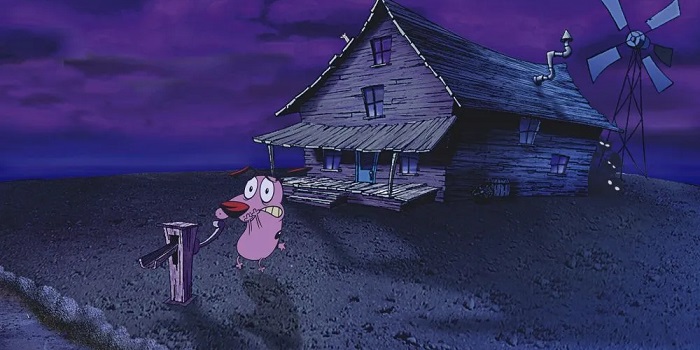
Courage the Cowardly Dog was not afraid to explore topics that were usually considered too dark or scary for children, such as death, loss, abuse, loneliness, mental illness, and corruption. One of the saddest episodes of the show, “Remembrance of Courage Past / Perfect,” explores Courage’s backstory with his parents & how he lost them. Then he meets Muriel for the first time, and we finally understand why he clings so fiercely to Muriel and Eustace, why he risks his pink little neck for them in every episode — they’re all he has left.
And then there’s the deeply flawed character of Eustace Bagge. Throughout the show, we see that he’s always grumpy and hateful. But in later episodes, when we meet his mother, Ma Bagge, we realize why Eustace is the way he is. It turns out Eustace had a very abusive and neglectful childhood. His mother hates him and thinks he’s a failure, and Eustace has internalized all this hate. He can’t escape it, so he projects it onto everyone else. Eustace helped pave the way for future nuanced anti-heroes like BoJack Horseman and Rick Sanchez, showing us that broken people deserve more than just a laugh track.
Courage the Cowardly Dog didn’t shy away from bleak endings either. The season 1 finale is a prime example, where Muriel and Eustace are turned into puppets by the magician Fusilli. Courage defeats the magician, but he can’t undo his curse. So, he takes control of Muriel and Eustace and begins pulling the strings, making them act out their typical everyday behaviors for them, and then the credits roll. No resolution. No happily-ever-after. Just a dog playing with the lifeless bodies of his owners because he’s in denial of the terrible loss he’s just suffered. These Black Mirror-esque endings were very uncommon back in the day, especially for a children’s show. As a result, there is no denying the TV show deserved every bit of its successful on Cartoon Network. Follow the link to find out the most underrated Cartoon Network TV shows..
 Follow Us
Follow Us
